Often used in a three-light setup, this supplementary light can help to improve and polish your lighting setup in the studio. It can add separation and 3-dimensional depth but in a very different way to a Kicker Light.
The Backdrop Light in photography is a separation light that points towards the background. It can be placed directly behind the subject or to one side. It can be modified to change the size and shape of the illumination area or shone through a Gobo to add texture and pattern to the backdrop.
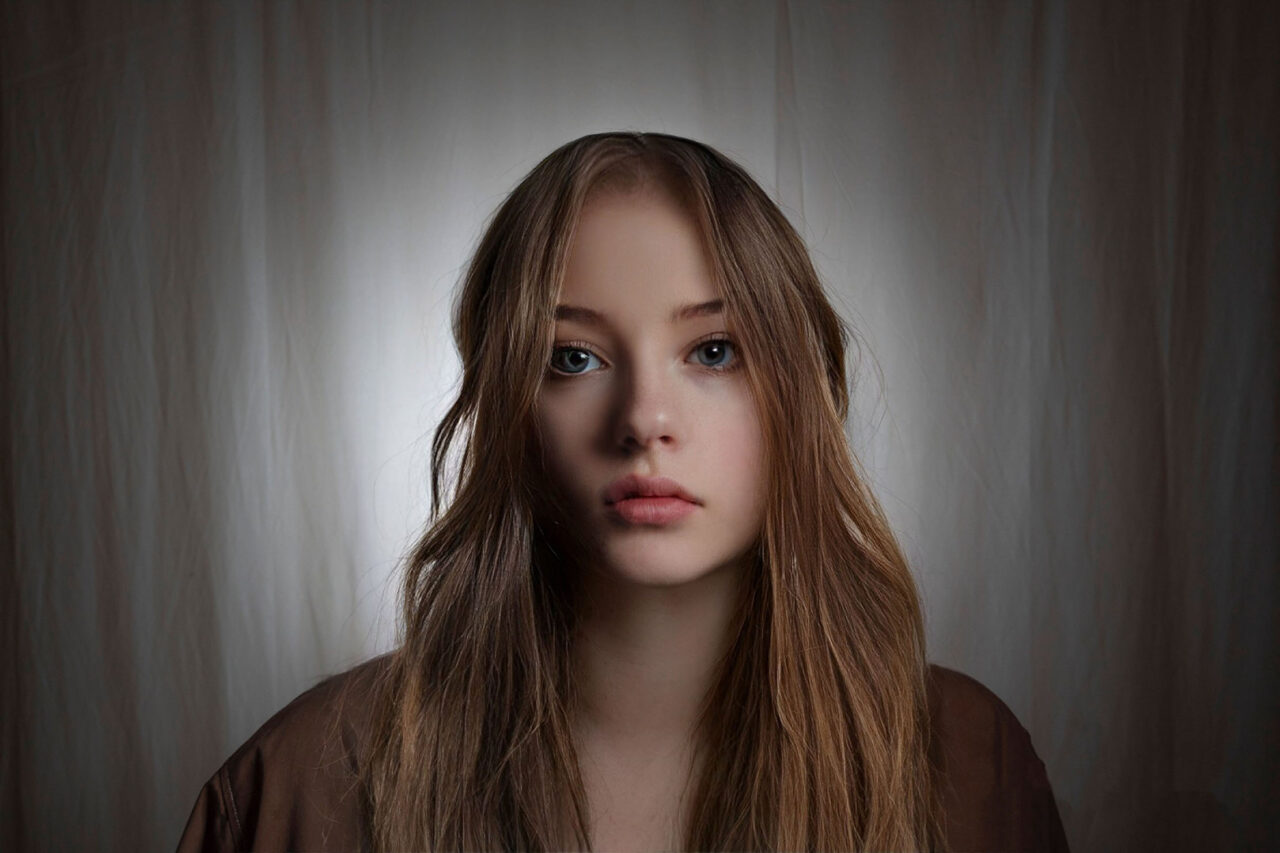
This is a light that can add some polish to our compositions by introducing some separation of the subject and some 3-dimensional depth. The following illustrated article will explain in more depth the application of a Backdrop Light; whether we need one, the positive effects of adding one, placement, modifiers and brightness.
Do you Need a Backdrop Light in Studio Photography?
The addition of a Backdrop Light in our lighting setup won’t always be required. If the backdrop is white or very light in colour, the other lights, Key and Fill, may be bouncing around enough uncontrolled light spread to illuminate the backdrop sufficiently to create some separation already, particularly if the light sources are large, unmodified and relatively far away from the backdrop.
It may be that we want to create a mysterious low-key photograph. In this case, we may not want to create any separation by shining a light on the backdrop. Instead, we want the edges of the subject to merge into the gloom of the dark backdrop.
If we want to create a sparkling, glowing edge around our subject with a strong, unmodified Rim Light directly behind the subject, the use of a Backdrop Light could diminish the effect by diluting the rim light, with a brighter background.
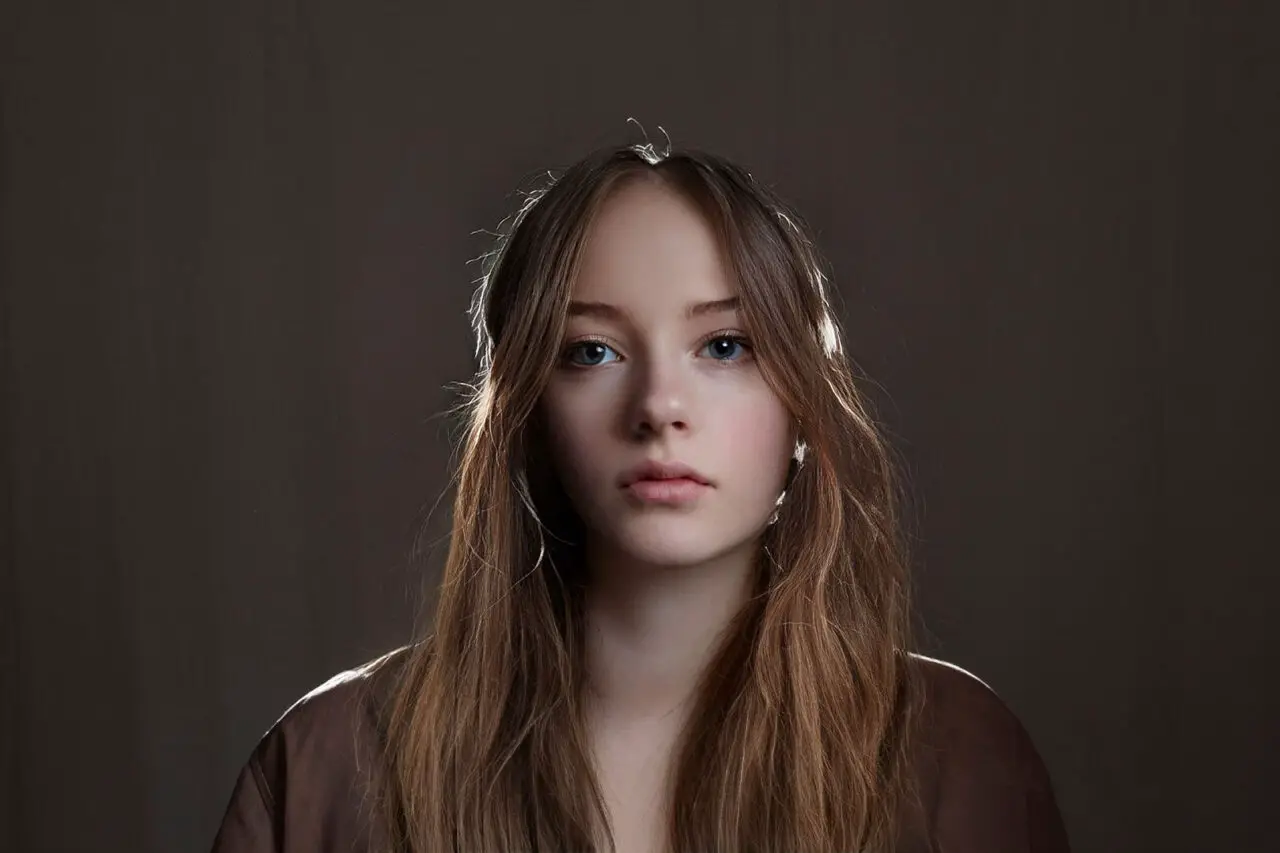
What is the Effect of Adding in a Backdrop Light?
If we wish to define the subject and lift it away from the murky background, the introduction of a Backdrop Light could pay dividends. The outline of the subject would become clear, helping the viewer to understand the form more clearly.
The Backdrop light has the effect of revealing the subject as a sharp, contrasting silhouette or partial silhouette, unlike a Kicker Light that directly illuminates the edges of the subject. This can have the effect of leaving a little mystery on the shadow side by obscuring the details of the subject while still revealing the outline shape against the backdrop.
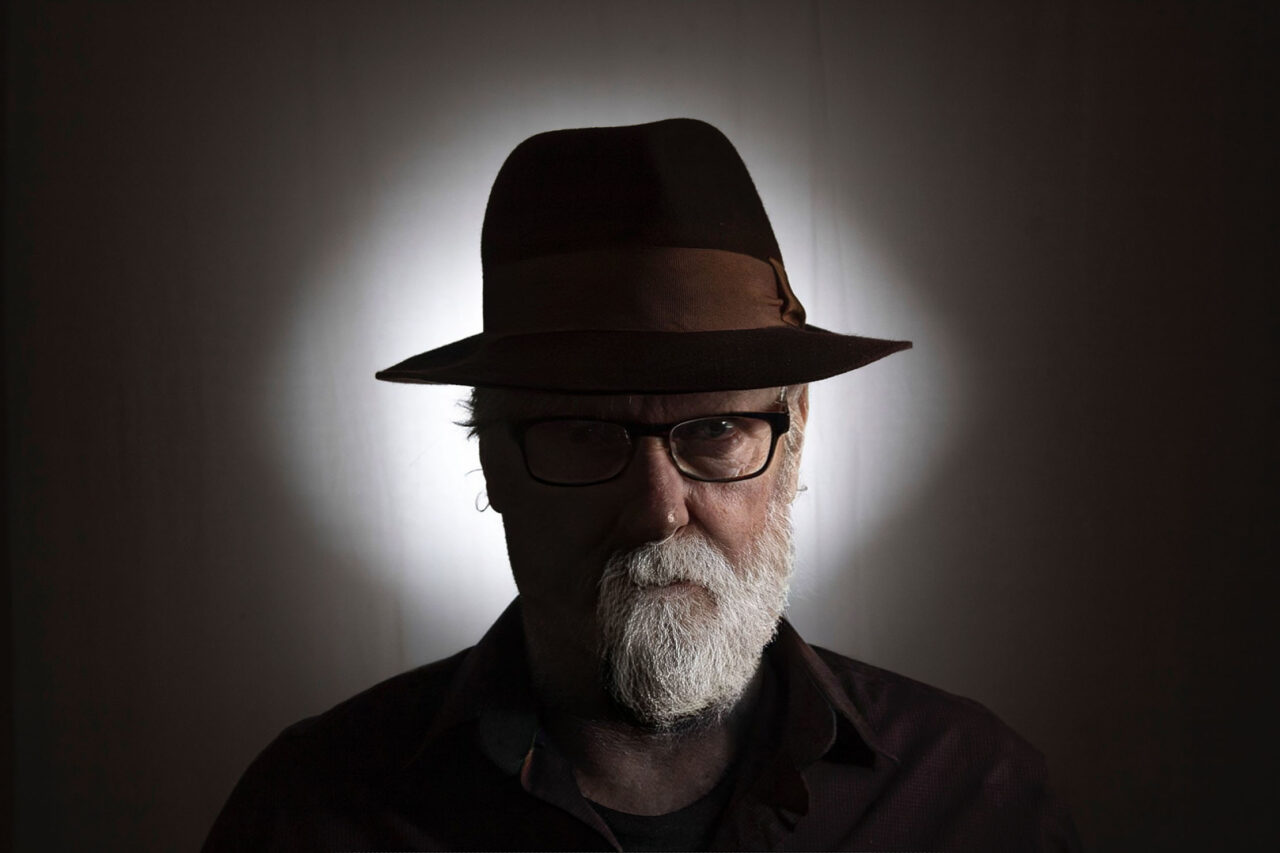
The surprising transforming effect may not at first be apparent especially if we are using many other lights in the setup. To see the silhouette effect of the Backdrop Light, disable the other lights and take a test shot with just the Backdrop Light. This will reveal the clarity and extent of the dark edges of the silhouette against the illuminated backdrop. This will help us decide if the light needs to be repositioned or if the brightness or modifiers need to be adjusted.
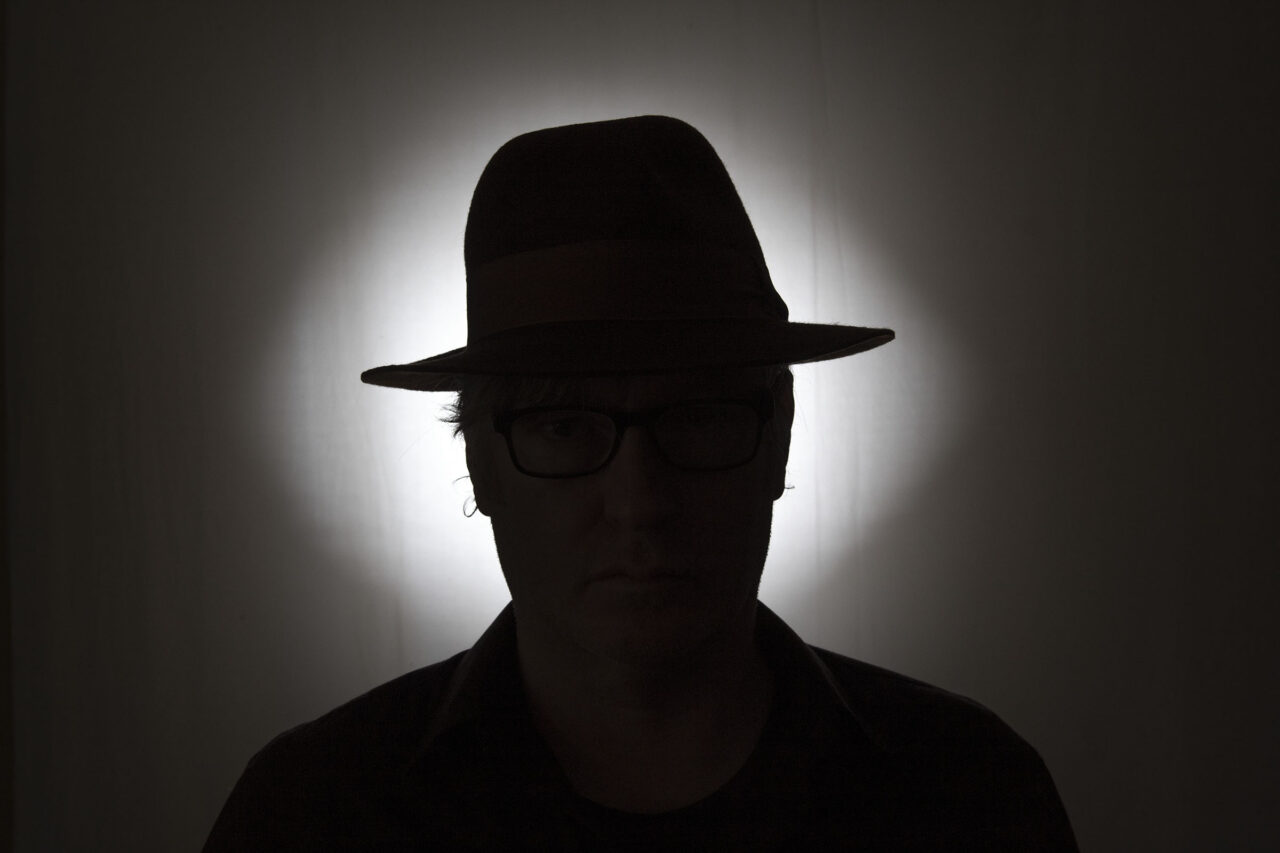
Photo by Oscar J Harper
What Can I Use as a Backdrop Light in Studio Photography?
Bare bulb Speedlites or Strobe flash heads would provide a great broad wash for the backdrop illumination. These are generally very powerful; the Strobes being the most powerful. They have the ability to completely overwhelm the backdrop with light for a perfectly white background if that is desirable such as in High-key photography. A more even spread of light can be achieved if they are placed further away from the backdrop.
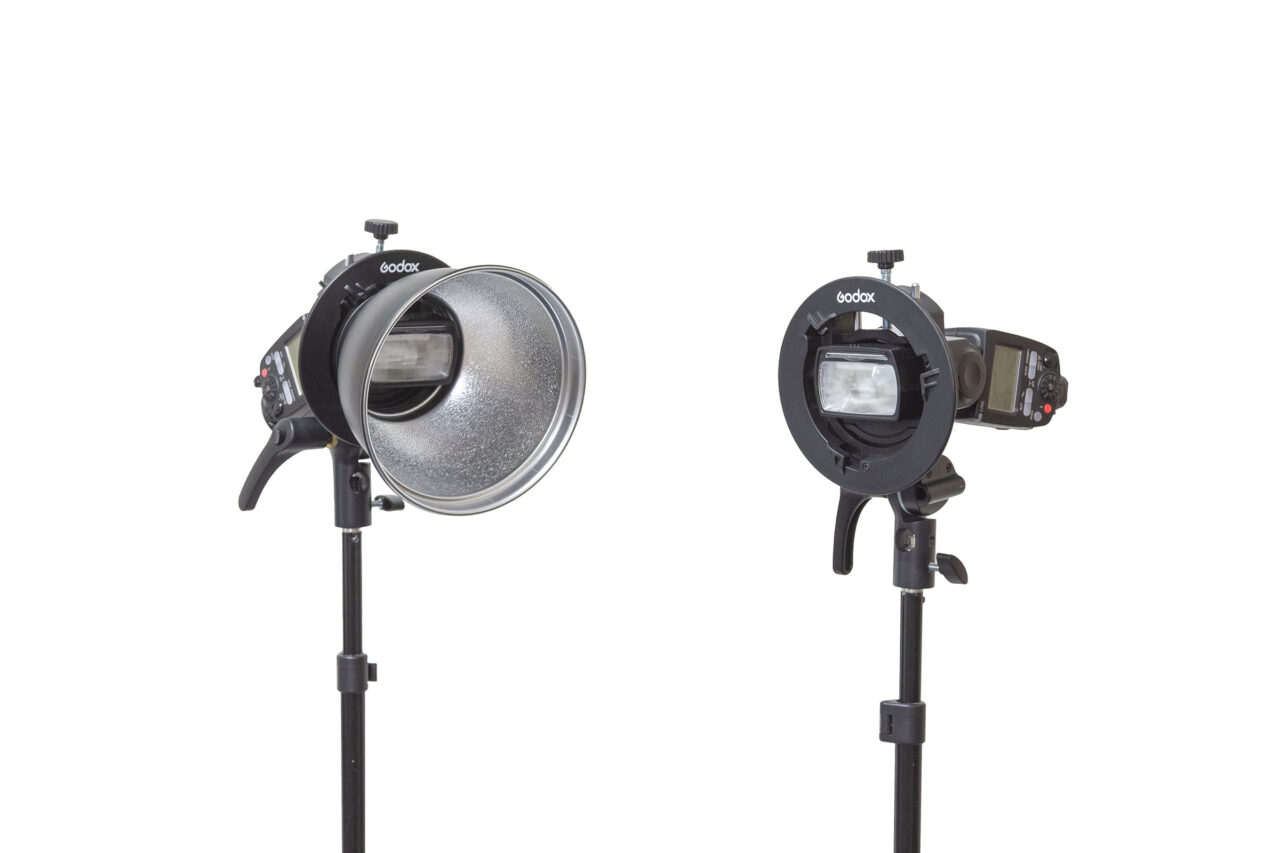
Photo by Oscar J Harper
If we only have the option of constant lights we could adopt the use of several LEDs, halogen, fluorescent or even Tungsten lamps all pointing at the backdrop from different sides and different heights to produce an evenly lit backdrop.
With these types of lamps, if we’re shooting against a white backdrop there is the possible problem of seeing a colour cast if we’re not using daylight-balanced constant lamps. This can be corrected in-camera by selecting the correct White Balance setting or later in post-processing.
If we don’t require the whole backdrop to be evenly washed with uniform light, we can introduce the addition of a Light Modifier and also think about the placing of the Backdrop Light.
What Modifiers can we Use on The Backdrop Light in Studio Photography?
Modifiers help us to control the quality and spread of light and therefore they can enable us to define the shape and intensity of the light on our backdrop. A 7-inch reflector (metal lampshade) will allow us to contain a lot of the sideways spread of light from a raw Speedlite or Strobe.
It also has a perfectly circular shape which we can take advantage of if it is quite close to and pointing squarely at the backdrop.
If we need a more constrained circle or ellipse we can introduce a Grid to the reflector lampshade. This is a honeycombed metal grid that can reduce the cone of light to a narrow beam, typically from 10° to 60°.
To create an elliptical shape we can use a Snoot modifier. We just need to move the Light with the Snoot to one side and point it obliquely at the background behind the subject.
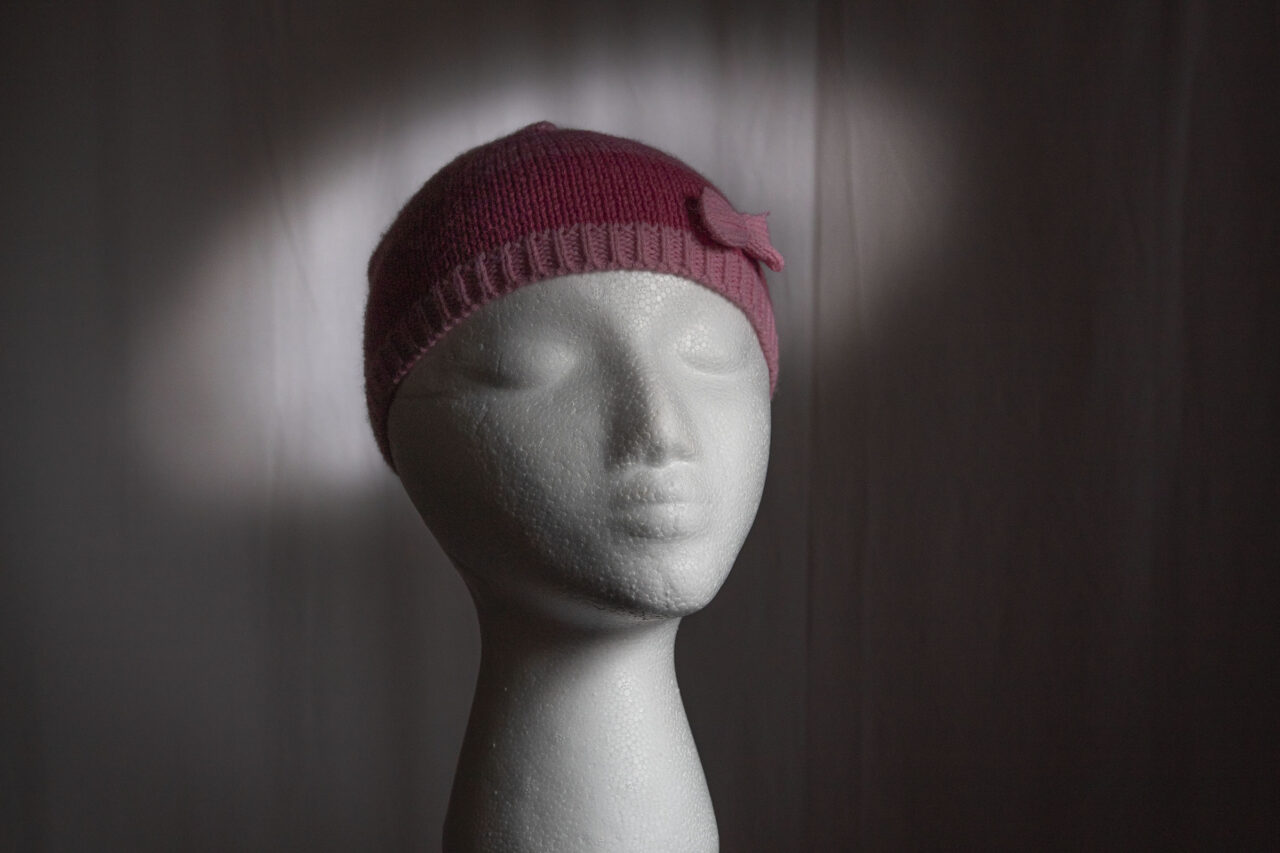
Photo by Oscar J Harper
Creatively, we may want our Backdrop light to resemble a square, rectangle or slot. We can achieve this by clamping on a Barn Door attachment to our 7-inch reflector tube. This can successfully reduce the uncontrolled spread of light and focus the Backdrop Light into a preferred shape to complement our overall lighting composition.
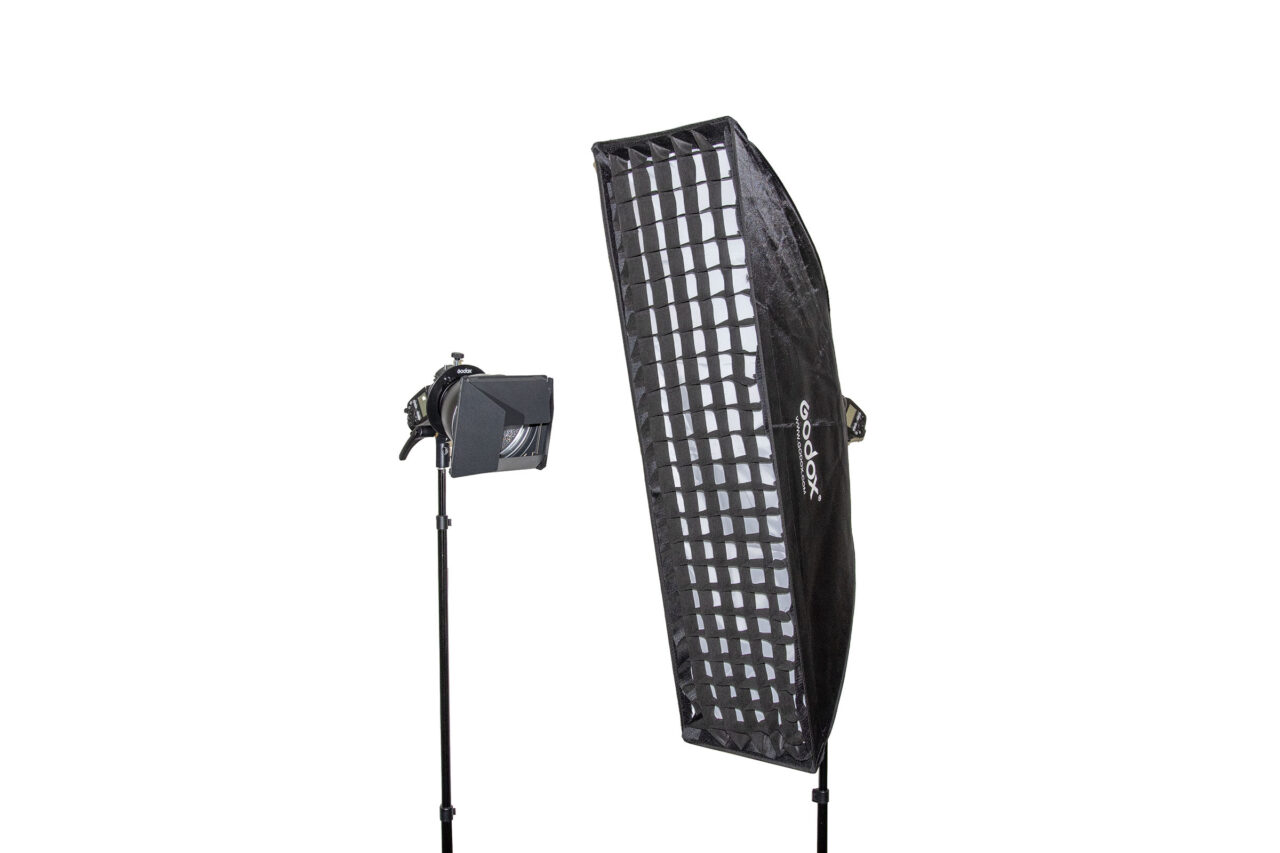
To produce a more even spread of light across the backdrop, particularly if we are working in a constrained space, we could add a Softbox modifier to our light source. These come with diffusion material across their openings sometimes several layers to minimise hotspots of light.
These are generally large and so have a wide spread of diffused light. They can be fitted with soft grids to control the spread of light. The grids are generally attached by velcro to the overhanging rim of the softbox. As they are usually quite large compared to a 7-inch reflector, placing them so they don’t obstruct the subject or appear in the frame has to be carefully considered.
We can add some interest and texture to the backdrop in the form of a shadow/light pattern by introducing a Gobo. This is a “Go Between Object” that usually sits between the light source and the backdrop.
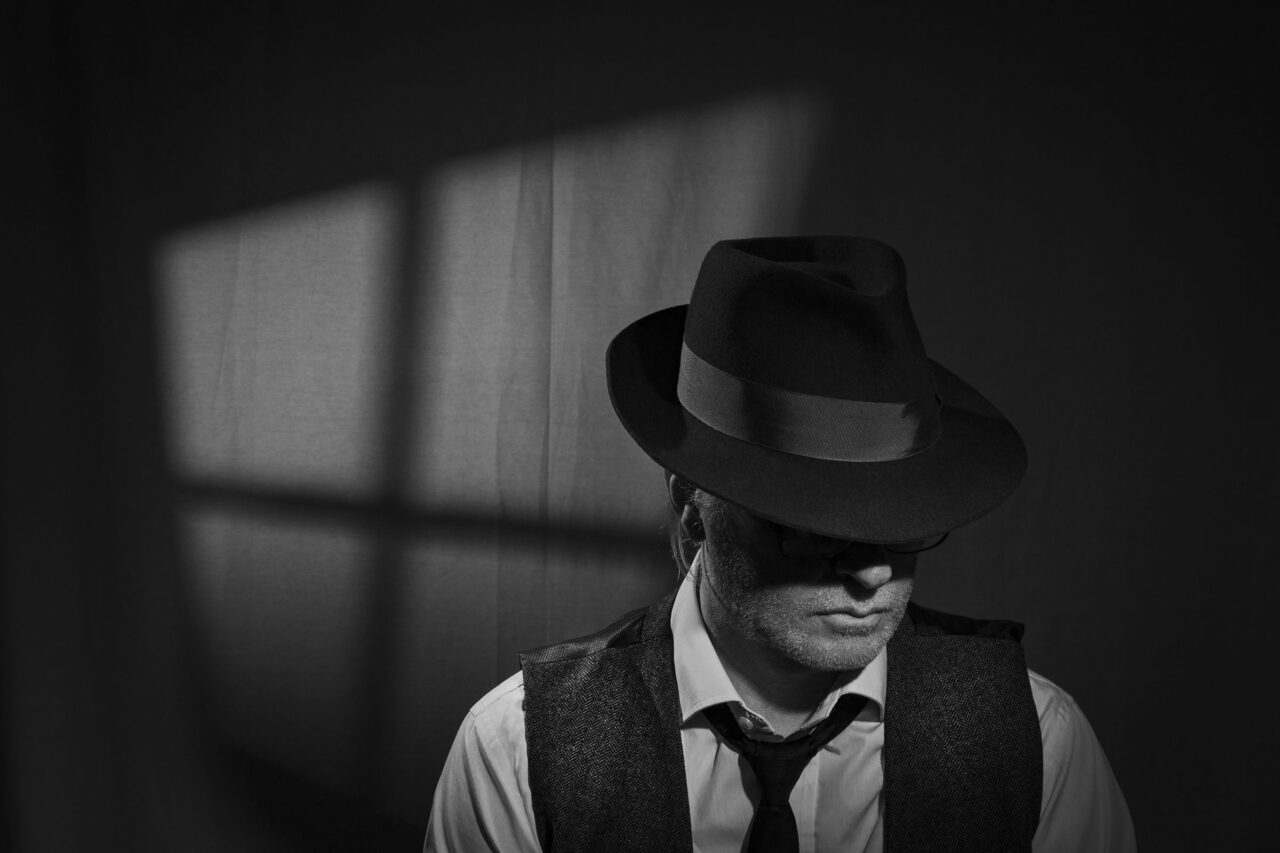
Photo by Oscar J Harper
They are usually an opaque board or sheet with a pattern or shape cut into them to project a shadow pattern onto the backdrop. They can be used to help tell the story of the photograph or simply add some tecture to a plain backdrop.
What’s the Best Place for a Backdrop Light in Studio Photography?
The Backdrop Light is usually placed behind or to one side of the subject. To get even lighting on the backdrop with one light the best place is directly behind the model, facing the background and square to it. It should be unmodified or a small enough modifier not to show in the frame behind the subject.
A bare bulb light or a 7-inch reflector fitted would not be visible in the shot. To increase the chances of an evenly lit backdrop we could apply some of the following tips:
- Turn the power of the flash or stobes up
- Move the lamp (and subject) further away from the backdrop
- Zoom the flash to wide angle
- Cover the flash head with diffusing material
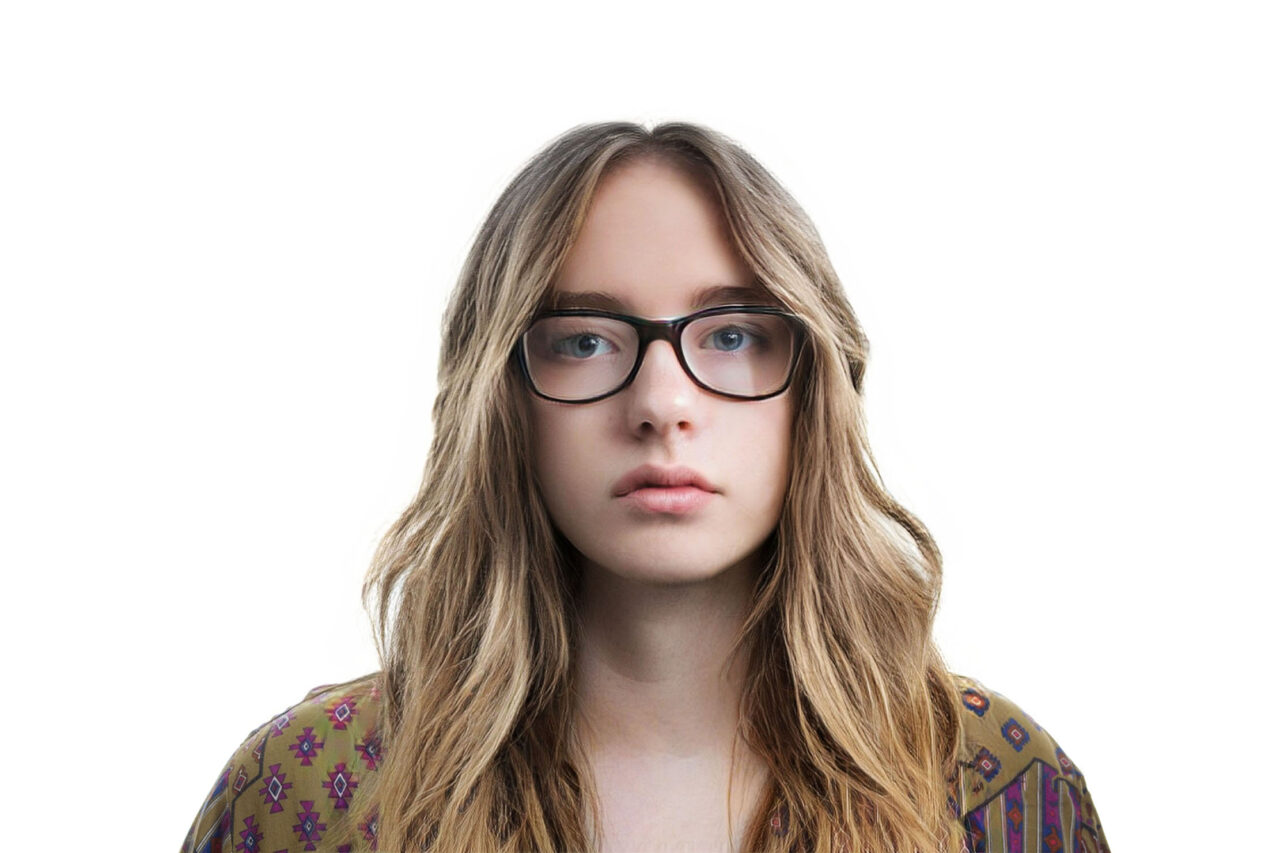
To use lights with larger modifiers to spread the light (such as softboxes, umbrellas etc), they should be placed behind and to one side of the subject. Using one light source to one side would create a graduated backdrop effect switching from light to dark across the background.
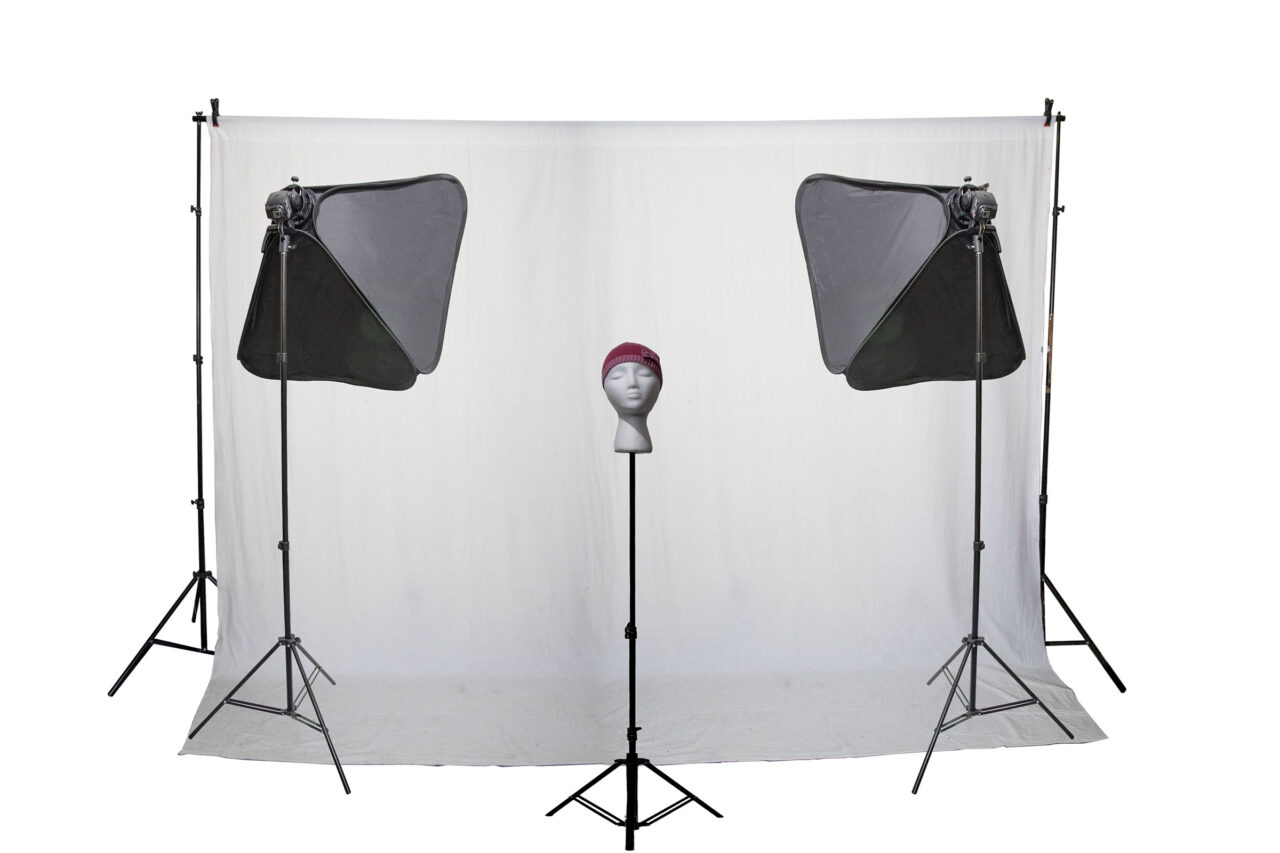
To even up the illumination of the backdrop with side lights, we can place lights on both sides, pointing in towards the centre of the backdrop. If we have many lights available, we could place two on either side, one high and one low, all pointing in towards the backdrop but always out of the frame of the camera.
What is a Spray or Halo Light in Studio Photography?
This creates a more interesting and engaging backdrop by introducing a tangible shape to the Backdrop Light.
The Spray Light, sometimes known as the Halo Light is one that is usually placed directly behind the subject. It is placed close enough to the backdrop or modified with a suitable attachment to control the spread of light and define the shape. Using a gridded 7-inch reflector or snoot creates a graduated halo behind our subject’s head.
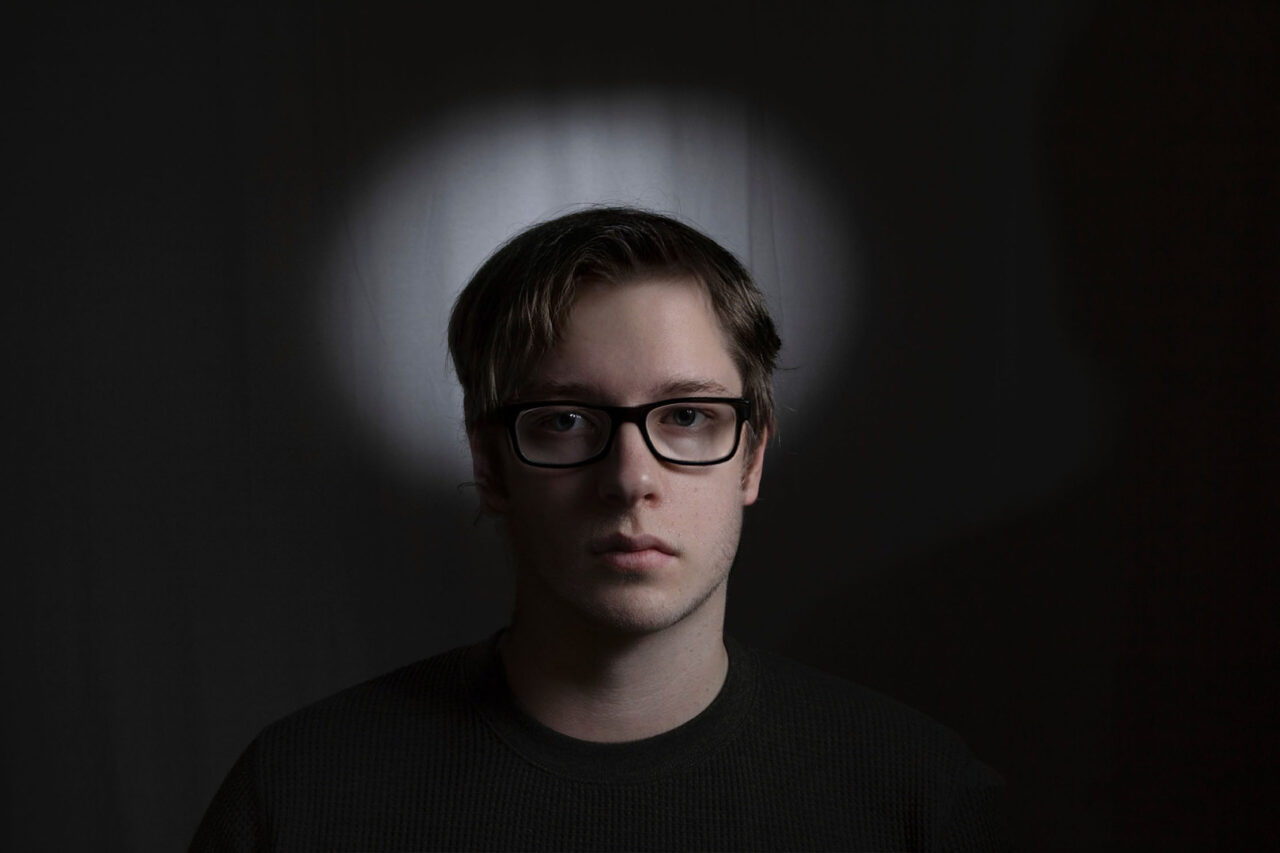
The size and definition of the Halo shape can be adjusted by moving the light closer to or further from the backdrop. When it’s close to the background, the fall-off of light is rapid so a harder edge between light and shadow is apparent. Moving the light source further away from the backdrop should result in a gentler fall-off and therefore a softer transition.
How Bright Should a Backdrop Light be in Studio Photography?
If the goal is to produce a pure white background with blown out, clipped whites, we should use a powerful flash setting of +2 or +3 stops above the key light. The idea is to totally overexpose the white backdrop without affecting the exposure of the main subject. Make sure that this powerful floodlighting doesn’t bounce light off other surfaces and interfere with the overall exposure or compromise the Key and Fill lights.
To produce some subtle separation light for the subject we can use a flash set to a lower power on a darker backdrop.
For a medium-lit backdrop, place the Backdrop Light about 1.5 to 2 metres from the background, set the power to the same as the Key Light and make adjustments to suit with further test shots.
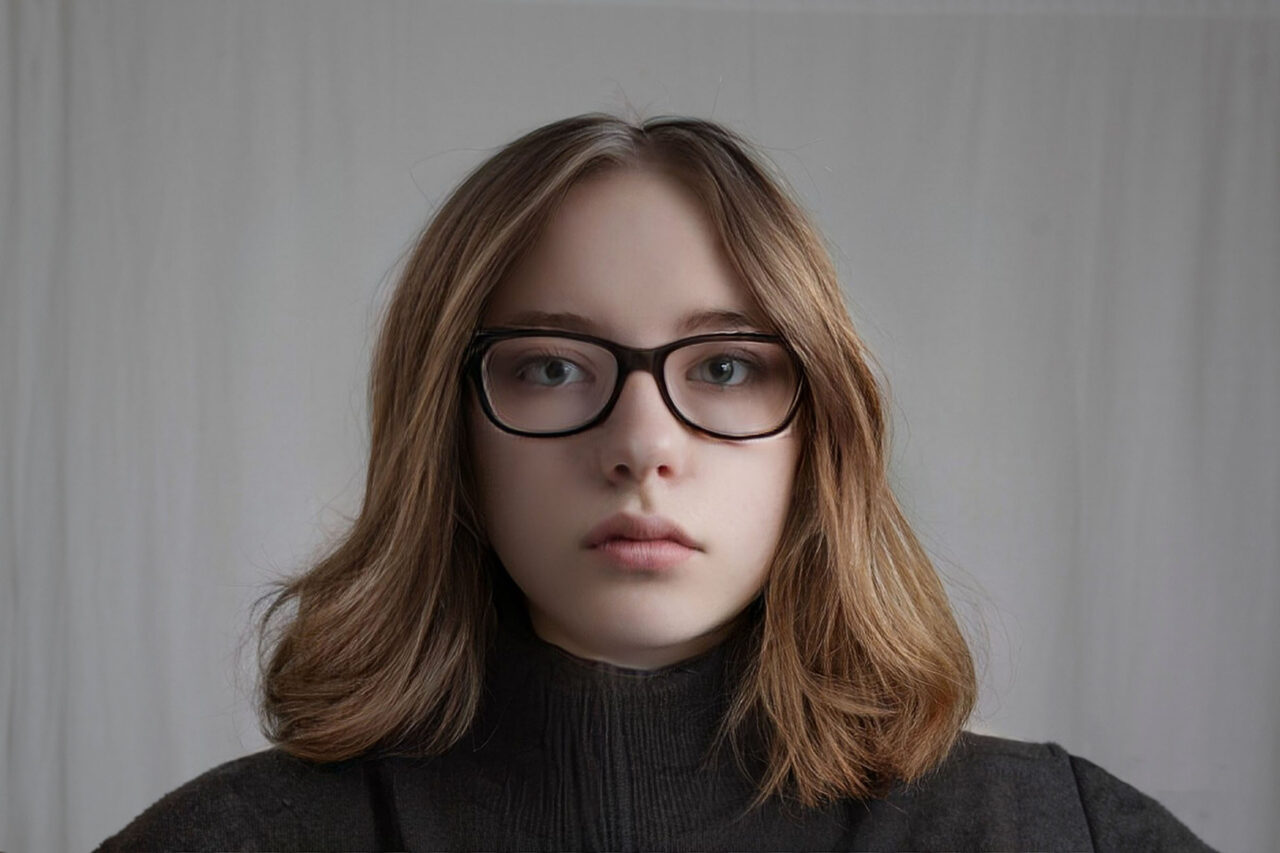
As a general rule, a dark or black backdrop will require more flash power than light or white backdrops as the darker colour will absorb more light. We can create a pleasing grey shade on a black or white backdrop with the correct power of light.
How do we Prevent Shadows on Our Backdrop?
If the backdrop lights are behind the subject, they are unlikely to cast shadows on the backdrop. The problem could be the placement of the Key and Fill lights. If they are located in front of the subject they could cast shadows on the backdrop if they are placed at the wrong angle or the subject is too close to the backdrop.
Here are four best practices to minimise or eliminate shadows on the Backdrop:
- Move our subject (and main lights) further away from backdrop
- Rotate our Key and Fill lights away from the camera (whilst still ponting at the subject)
- Raise up our Key and Fill Lights
- Add grids to the modifiers
- Overpower the shadows with a Backdrop Light.
The first three cause the shadows to be cast outside of the frame of the camera’s field of view. So, although they are still there they are not captured as shadows of the subject on the backdrop.
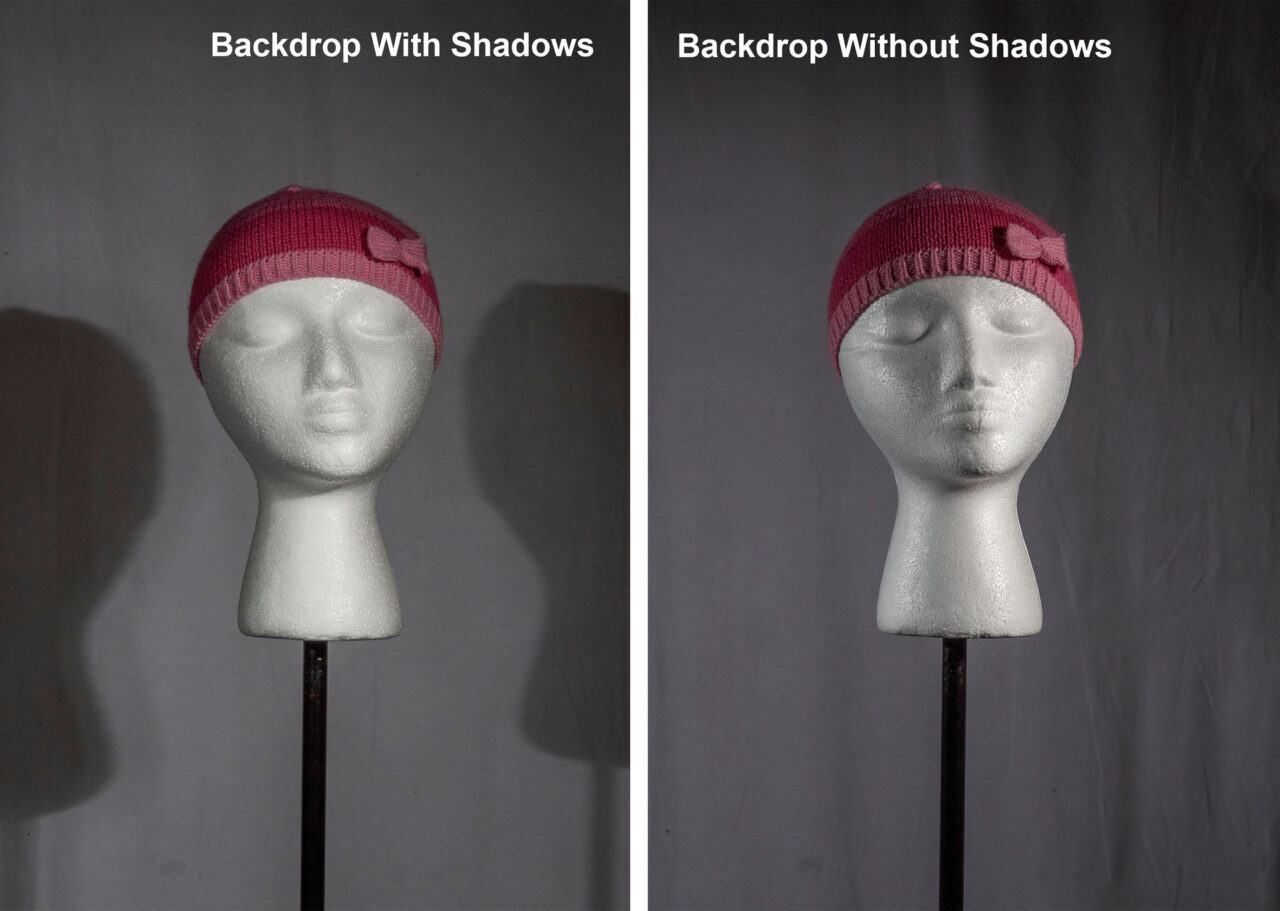
Rotate Main Lights Away From the Camera.
Photos by Oscar J Harper
The fourth one controls the spread of light to prevent accidental shadows.
The fifth one is the option where we place a strategic Backdrop Light aimed at the place where the shadows appear on the backdrop. This will effectively overwhelm the shadows with light and eliminate them from the background.
How do we Use the Inverse Square Law to Change the Backdrop Shading?
Simply put, the closer the light source is to the backdrop, the brighter it will appear. As we move it further away the backdrop will appear darker. This happens very quickly at first as the light fall-off is rapid as we move the light away, starting from a close distance.
If we double the distance of the light from the backdrop the amount of light reaching it will be one quarter. According to the Inverse Square Law:
The Light will be inversely proportional to the square of the distance
LIGHT INTENSITY = 1/(DISTANCE)²
(1 Metre Away) – 1/(1)² = 1
(2 Metres) – 1/(2)² = 1/4
(4 Metres) – 1/(4)² = 1/16
This happens every time we double the distance of the light from the backdrop. However, the rate of fall-off decreases as we move the light further away due to the Inverse Square Law.
As we move the Lights further away from the backdrop, the light arriving there becomes much less due to the light fall-off and it will appear to be a darker shade of grey. Although the rate of fall-off decreases as we move it further away, the spread of light is much more uniform so we can probably use fewer light sources to light the backdrop evenly.
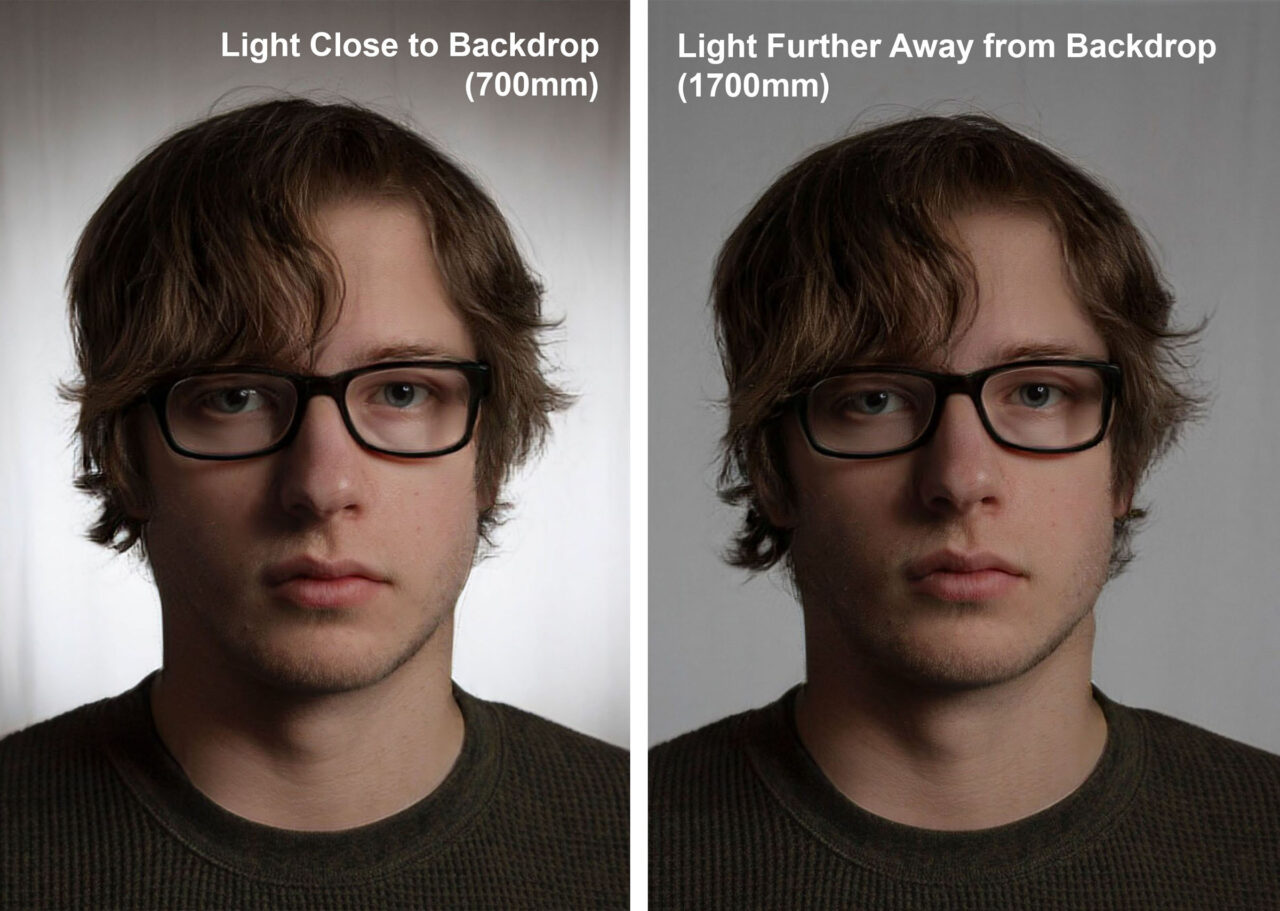
Photos by Oscar J Harper
If we are using a white backdrop, we can use this knowledge to control the tone of the backdrop from white to black and myriad greys in between.
Using the Key and Fill Lights to Light the Backdrop
If we have Key and Fill lights with large modifiers such as softboxes or umbrellas, we could use these to illuminate the backdrop as well as the main subject. The large spread of light could be utilised to wrap around the subject and spill onto the backdrop.
If the subject is correctly exposed, the backdrop, in this case, would appear darker than the lighting on the subject because of what we know about the inverse square law and how light falls off as it gets further away. Obviously, the backdrop is further away from the Key and Fill than the subject but it would still provide some useful separation without the added complication of a Backdrop Light.
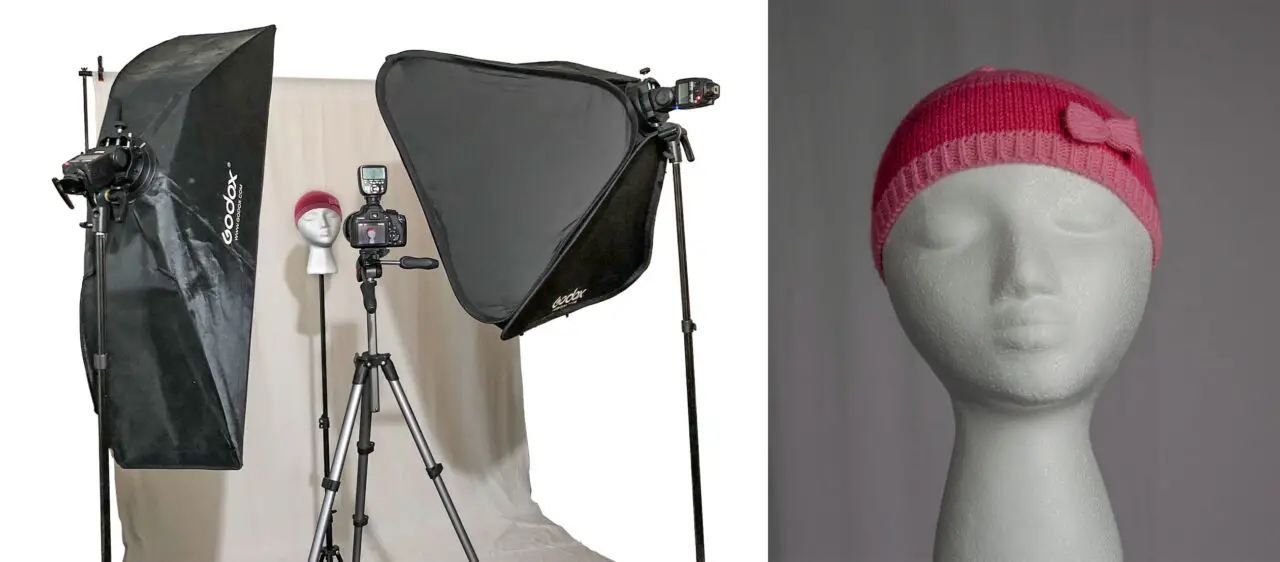
If we were to move the Key & Fill closer to the subject, and adjust the camera settings to maintain the correct exposure, the backdrop would appear darker due to the rapid falloff of light because it is closer to the subject. So we can use this knowledge to control the shade and tone of the backdrop. Therefore, as long as we correctly expose the subject, moving the Key and Fill closer to the subject makes the Backdrop appear darker and moving them further away creates a lighter backdrop.
Related Articles
Ultimate Guide To The Different Indoor Studio Lighting Setups!
For a comprehensive look at all the different types of principal lighting positions and 18 studio lighting setups, check out our illustrated guide right here in Photography Skool.
